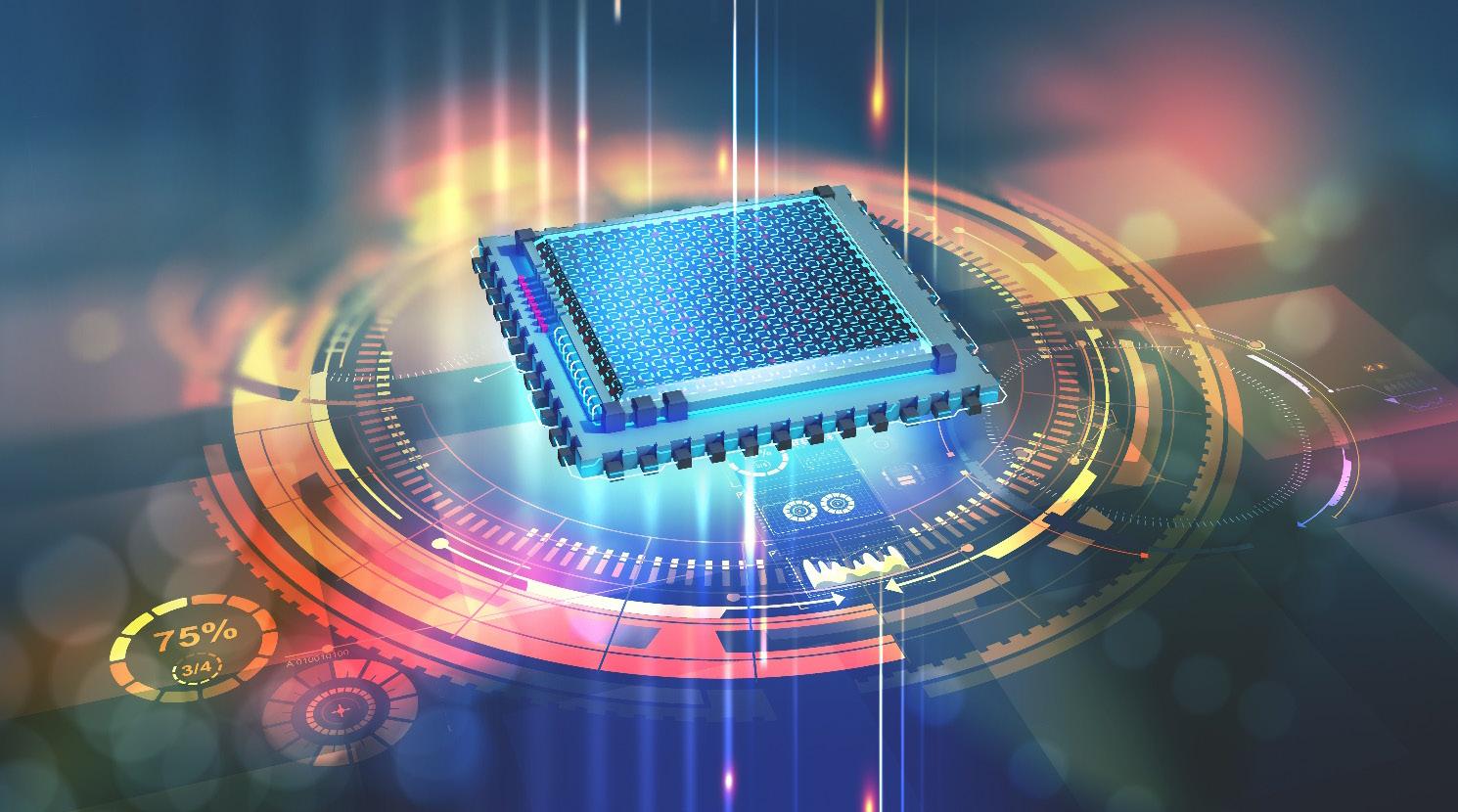
4 minute read
System integration
High-Performance Computing (HPC) has historically taken advantage of new specialised hardware. Graphical Processing Units (GPUs) and Field Programmable Gate Array (FPGAs) are examples of the trend in accelerator use for HPC development. A primary motivation for the accelerator paradigm is that low-level computational kernels can leverage specialised hardware while minimising changes to overall program structure: this approach isolates the need for program’s or algorithm’s refactoring efforts to those kernels specific to the hardware accelerator. A secondary motivation is that the accelerator model offers an opportunity to explore any emerging technologies, while also reducing the technical risk with respect to the overall system development. The opportunities offered by QC represent a challenge to the accelerator model, which has been up to now implemented exclusively within the framework of the classical, deterministic Turing model.
In addition to the challenges described above, it is not yet clear how the workflow of hybrid quantum applications will look like in the future, and different models of integration quantum and classical machines are being explored. Some large data centres such as CEA, CINECA and Jülich Supercomputing Centre (JSC) plan on integrating QC in their supercomputing facilities and workflows, while, for example, the LUMI consortium is also considering other distributed approaches.
Advertisement
We distinguish two main models of integration: loose and tight.
1. Loose integration model:
It describes a case where the QPU remains physically separated from the host system, which can be an HPC or an intermediate server. The two systems can communicate through a network interface (e.g. Infiniband, CXL). This is the classical client-server model as shown in Figure 1 where the QC server may either be on a dedicated connection with the host node or part of a larger computational grid. In this model, the network takes care of communicating the requests between the host server system and the QC (client). Access to each QPU must still be provisioned by the control system and this control system may be a switch that forwards program and data to individual QPUs or an ‘intelligent’ routing algorithm dispatching the workload based on QPU usage and demand. The entry point into the system remains the primary bottleneck as well as the single point of failure.
The QPU can be located on-premise or on a remote server.
For the loose integration model, communication latency can be eliminated in both the co-located and remote server models, thus maximising the bandwidth and computation speed-up of the HPC+QC infrastructure. Further, as technology matures to allow deeper quantum algorithms, required for actual quantum advantage, the execution time on the QPU will grow, thus alleviating latency issues. Some practical issues do set the co-located and remoteserver models apart. Arguments in favour of the co-located model include:
o Easier data security implementation, especially when it comes to dealing with sensitive (e.g. industrial trade secrets) or classified data (e.g. for governmental agencies).
o Synergies from having research and system administration staff of both HPC and QC at the same site.
Arguments in favour of the remote-server model include:
o In a distributed approach, both HPC and QC can be optimally accommodated. Data centres designed for
HPC systems are suboptimal for quantum computers, and vice versa. QPUs need to be properly shielded from environmental noise, and might even need to be located underground. Further, HPC installations consume significantly more energy, and are best located in areas with lower cooling needs and cheap green energy sources; from an energy-consumption perspective, quantum computers can be located anywhere.
o Higher modularity, increasing inclusiveness of different quantum technological solutions developed in
Europe.
As the technology is still emerging, hardware updates/improvements are frequent. This means that the QC hardware provider’s engineers often have to intervene at the site of the quantum computer, to implement updates and/or maintenance. Hence, when selecting the hardware provider, its geographical proximity to the
site where the quantum computer is installed is to be preferred. For example, this is the case for an IBM Quantum System One installed at Ehningen in Germany as part of a strategic partnership between Fraunhofer and IBM. Thus, the remote-server model facilitates adding, for example, QPUs located in research labs to the HPC+QC ecosystem.
On-premise and distributed remote server-based schemes should be considered complementary. At this stage, Europe needs to hedge its bets, and explore both strategies. In the framework of the European project HPC-QS, two quantum simulators (QPU working in the analog regime) will be installed in two European HPC facilities: TGCC in France and JSC in Germany. This pilot project is a cornerstone towards a European platform, providing quantum capabilities across Europe. It can be seen as a testbed for on-premise access, to assess its advantages and drawbacks.
2. Tight integration model:
This model assumes that the hardware and software requirements for QPUs can be somehow combined within the hardware and software requirements for the host node, to achieve a single coherent tightly connected system. For some QC hardware technologies, it might be possible in the long run to integrate QPUs directly on the classical chips.
The tight integration model will require multiple and significant advances in the technology currently used.
Figure 2.Representation of different levels of integration of QC systems with classical systems (tight or loosely coupled)





